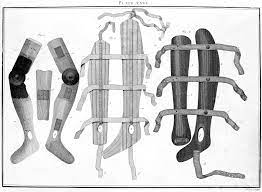
Osteotomy plates are medical devices used to treat bone fractures, particularly those that involve the bones of the skull, face, or jaw. An osteotomy is a surgical procedure that involves cutting and repositioning a bone to correct a deformity or improve function. The global Osteotomy Plates Market Size was valued at $613.15 million in 2020 and is projected to reach $900.22 million by 2030, growing at a CAGR of 3.9% from 2021 to 2030.
During an osteotomy procedure, an osteotomy plate is placed over the cut bone to hold it in place while it heals. The plate is made of metal, typically titanium or stainless steel, and is shaped to fit the contour of the bone. It has screw holes that allow it to be secured to the bone with screws.
Osteotomy plates come in different sizes and shapes, depending on the location and severity of the fracture. Some plates are designed to be contoured to fit the curvature of the bone, while others are pre-bent to fit specific anatomical structures. In addition, some plates have locking screws that provide added stability to the fracture.
Osteotomy plates can remain in the body permanently or may be removed after the bone has healed. The decision to remove the plate depends on several factors, including the location and severity of the fracture, the patient’s overall health, and the potential risks associated with leaving the plate in place.
While osteotomy plates are generally safe and effective, there are risks associated with any surgical procedure. These include bleeding, infection, and damage to surrounding tissues. In addition, the plate may need to be removed if it causes discomfort or other problems.
Download Free Sample PDF:
https://www.alliedmarketresearch.com/request-sample/2650
Osteotomy surgery is a type of surgical procedure in which a bone is cut and repositioned to correct a deformity or improve its function. The procedure is commonly used to treat conditions such as arthritis, osteonecrosis, or bone malalignment.
During the surgery, the surgeon makes a precise cut in the bone, repositions the bone to the desired location, and then secures it in place using screws, plates, or other fixation devices. The goal of the surgery is to restore normal alignment and function of the bone, which may alleviate pain, improve joint stability, and increase range of motion.
Osteotomy surgery can be performed on various bones in the body, including the hip, knee, ankle, and spine. The specific technique used depends on the location and severity of the bone deformity.
After the surgery, patients will typically require a period of rehabilitation, including physical therapy and exercises to help restore strength and mobility. The recovery time varies depending on the type and extent of the surgery and may range from several weeks to several months.
As with any surgical procedure, there are risks associated with osteotomy surgery, including bleeding, infection, nerve damage, and problems with bone healing. However, the benefits of the surgery can outweigh the risks in many cases, particularly for those who are experiencing significant pain and functional limitations due to bone deformities.
The long-term outcome of high tibial osteotomy (HTO) varies depending on several factors, including the underlying condition being treated, the patient’s age and activity level, and the success of the surgery.
HTO is most commonly used to treat patients with early-stage osteoarthritis of the knee or malalignment of the lower limb. The goal of the surgery is to shift the weight-bearing load from the damaged or worn-out side of the knee to the healthy side, which can help alleviate pain, slow down the progression of arthritis, and improve knee function.
Several studies have shown that HTO can provide long-term pain relief and functional improvement for many patients. For example, a study published in the Journal of Orthopaedic Surgery and Research found that patients who underwent HTO for medial compartment osteoarthritis of the knee had significant improvements in pain, function, and quality of life at a minimum of 10 years after the surgery.
However, the success of HTO depends on several factors. Patients who are younger, more active, and have less severe arthritis tend to have better outcomes than those who are older, less active, or have more advanced arthritis. In addition, the success of HTO depends on the patient’s adherence to postoperative rehabilitation and lifestyle modifications, such as weight.
Contact:
David Correa
USA/Canada (Toll Free): +1-800-792-5285, +1-503-894-6022

